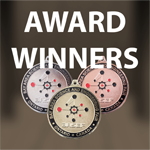
Journal/Diary Information
What is the Journal/Diary?
This is sometimes called a logbook. It is a way to record and keep track of what you have done from start to finish!
Planning is very important – include in your journal/diary details of how you chose your project, what you were thinking when you were working on it, what you are researching when you performed experiments, materials you used, problems you encountered, and how you dealt with them.
Think of this as your rough notes for your final report.
Why is the Journal/Diary important?
Experienced scientists and engineers know the importance of keeping a logbook of everything to do with their work. Sometimes things don’t go as planned, and you may need to go back in your notes and figure out where the error was. Sometimes you will get a different result than you expected, and it’s helpful to review where you started. Sometimes you will be writing down surprises about your research. A Journal/ Diary/ Logbook allows you to keep all your rough notes in one place.
Creating a Journal/Diary or Logbook.
The most successful students typically create 4 files or sections and start a table of contents.
Section 1 – the beginning …. List topics of problems you considered to investigate, what are your thoughts about each?
Section 2 – literary research. List the resources you examine. If you take notes from a text, head the notes with all the information you will need to make a citation. Use the margins to enter the page of the reference from which the notes were taken. This will give you easy access to the “who,” “what,” “where,” and “when” that you’ll need when writing your research paper.
Section 3 – Experimental research or Engineering design including the research plan, data collection, and data analysis.
Section 4 – daily log where daily activities related to the research project are recorded. After the experiment is recorded, head to a new page with “Discussion” or “Interpretation” before writing your inferences. Start a new page to write the “Conclusion.” Remember, the better the records you keep, the easier it is to validate your work.
Additional notes ….
- Date each entry as you go.
- The journal/diary/logbook must include all the steps of the scientific method, from the inception of the project to its completion. Scientific notebooks include literary and experimental research, the development of your idea or product and its evaluation, and all calculations.
- The journal/diary/logbook is the chronological record of events during the experimentation.
- Use the active voice in the first person when making an entry so it clearly indicates who did the work. Your experimental entries should read like a story. Illustrate as necessary – a picture can be worth a thousand words!
- Record everything – no detail is insignificant.
- Never remove or obliterate an entry from your notes. What you think is “a goof” may later turn out to be a great asset!
What does Journal/Diary for a virtual Science Fair look like?
Judges like to see your handwritten notes and journal when available, this is not possible with a virtual fair.
So, you can either keep a handwritten logbook and take pictures of the pages and submit that, OR, you can keep a journal/diary on your computer and upload it as a word file. Either way is acceptable. The most important thing is that you document the whole process from initial brainstorming, research, experimenting, analysis, to writing the final report.
Don’t forget to include what you are thinking – the challenges you faced, errors made, and what you learned from these. That is what the judges are looking for.
For templates on how to set up your Journal/Diary check out the Science Success Student Workbook




